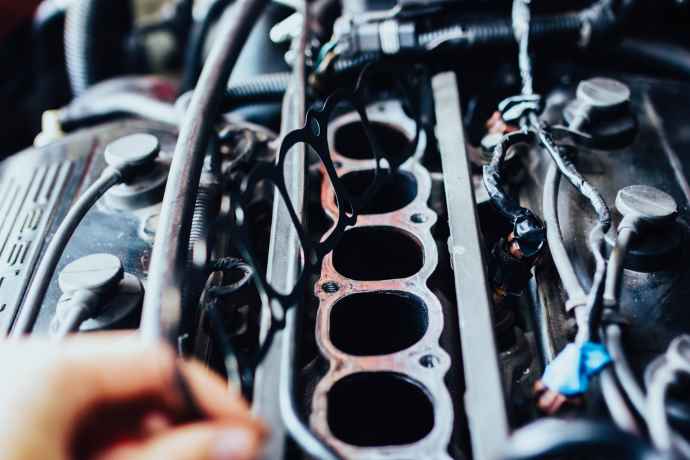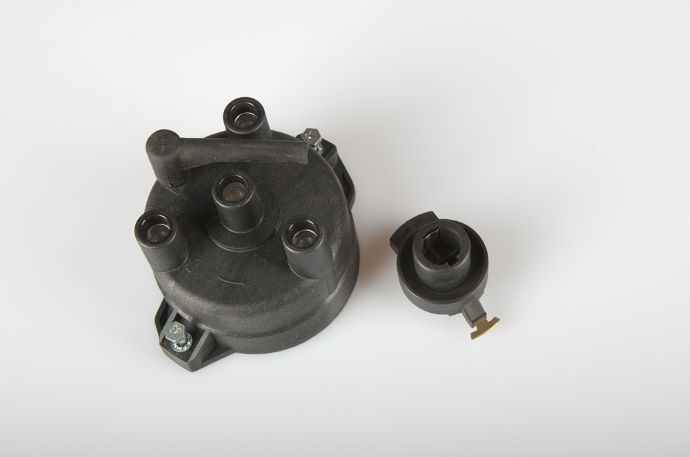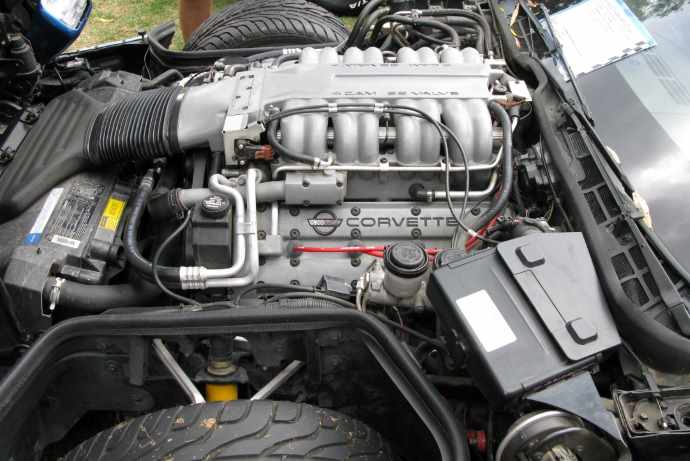4.3 Vortec engine is a 6-cylinder small block engine manufactured by General Motors (GM).
In 1985, the 4.3 Vortec engine was introduced to the market and continued to be produced until 2014.
The engine is one of the most reliable engines in the Vortec family and is still used in a number of vehicles today.
However, despite its impressive performance, 4.3 Vortec has some common problems.
In this article, I have discussed the most common GM 4.3 engine problems and their symptoms and solutions.
GM 4.3 engine has 5 common problems, including intake manifold gasket leaks, central port injection issues, distributor cap failure, throttle position sensor issues, and EGR valve failure.
Despite these common issues, some specific model years encounter engine knocking (L35 and LF6, 1996–2002) and excessive oil consumption issues (LU3, 2004–2009).
Read also 4.8 Vortec engine problems.
1. Intake Manifold Gasket Leaks

LB4 and L35’s intake manifold gasket quality is below the standard level.
As a result, the gasket set is prone to engine stalls, leaks, overheating, etc.
An intake gasket seals the engine’s vacuum and coolant.
As the gasket is made of rubber, overpressure, and temperature can cause it to wither or crack.
Therefore, the coolant leaks, causing overheating and engine performance issues.
On the other hand, the intake manifold is responsible for regulating the air-to-fuel ratio.
Vacuum leaks can cause air-to-fuel ratio imbalances, resulting in poor engine performance, stalling, and cylinder misfires.
Symptoms of Intake Manifold Gasket Leaks
- Engine overheating
- Cylinder misfires
- Poor acceleration
- Reduced engine power
- Low-level coolant
- Visible coolant leaks
Solution
Inspect intake gaskets regularly.
According to some reports, the 4.3 Vortec engine gasket leaks after 50,000 miles.
So, if you find any leaking symptoms, replace the intake gasket.
I suggest replacing the intake gaskets every 50,000 miles, even if there are no leakage problems.
You can watch this video to learn how to replace the intake gasket in a Vortec 4.3L engine:
2. Central Port Injection Issues
The 4.3L engine’s central port injection is also known as “Spider Injection.”
The spider injection system comprises a central pump with six tubes connecting each engine cylinder.
Fuel leaks from the supply line, regulator, or return lines are common problems with the 4.3 Vortec engine.
Faulty design is usually blamed for fuel leak problems in the spider fuel injector system.
Symptoms of a Faulty Central Port Injector (Spider Injector)
- Engine misfires
- Engine starting issues
- Poor fuel economy
- Long cranking time
- Check engine light
- Unstable idle.
Solution
Take your vehicle to a repair shop to identify the problem correctly.
A mechanic can use specialized tools to identify leakage and fix it.
However, if an individual injector is faulty, replace the injector to resolve central part injector problems.
A single spider injector replacement costs approximately $150 to $200.
3. Distributor Failure

An engine’s distributor distributes high-voltage electricity from the ignition coil to the spark plugs.
On the other hand, a distributor cap is a cylindrical or dome-shaped cover that sits on top of the distributor.
Typically, it provides a secure and insulated housing for the rotor and contacts, facilitating high-voltage electricity distribution.
Distributor cap failure is common with Vortec engines.
Vortec engines’ distributor caps are made of plastic.
The distributor is located inside the engine’s high-heating part with low-level air circulation.
The cap is made from plastic, so it is prone to warping from heat.
The distributor cap and rotor in the 4.3L Vortec corrode too early, causing the ignition system to fail.
Symptoms of a Failing Distributor
- Engine starting issue
- Poor acceleration
- Poor idling
- OBD-II scanners generate P0300 to P0306 error codes.
Solution
Check the following 2 components of a distributor cap to identify whether the distributor is failing:
- Distributor cap
- Contact points
If the distributor cap is worn out, replace it with a new one with aluminum housing.
Distributors with aluminum caps last a long time.
The distributor should be replaced if it is faulty.
4. Throttle Position Sensor and Idle Control Valve Issues
One of the most common problems with 4.3-liter Vortec engines is the throttle position sensor and control valve failure.
4.3 Vortec engine’s throttle position sensors are mounted on the throttle body.
It determines airflow into the engine’s intake manifold by controlling the throttle valve’s opening and closing.
Usually, sensors are made for a vehicle’s lifetime, but the 4.3L engine’s throttle position sensor gets dirty or fails with time.
The idle control valve, or ICV, is also responsible for regulating airflow.
Like the throttle position sensor, the 4.3L’s ICV also fails with time.
Symptoms of ICV and TPS issues
- Engine stalling
- Rough idling
- Poor acceleration
- Transmission shifting issues
- Slow accelerator response
- P0122 code is generated by an OBD-II scanner.
Solution
If the throttle position sensor fails, you must replace it with a new one.
4.3 Vortec throttle position replacement costs around $150 to $250.
Replace the faulty idle control valve too.
The replacement cost of the 4.3 Vortec engine idle control valve is $150 to $200, including labor costs.
5. EGR Valve Failure
Excessive carbon buildup in a 4.3-liter Vortec engine is another common problem.
Carbon buildup in the 4.3 Vortec engine causes the EGR valve to get stuck.
When the EGR valve is not working correctly, the fuel in the engine will not burn properly and cause excessive emissions.
Excessive emissions affect the environment badly.
As a result, a stuck-open EGR valve raises the combustion chamber temperature.
Symptoms of a Faulty EGR Valve
- Rough idle
- Poor performance
- Black smoke from the exhaust
- Reduced fuel economy
- Smell of fuel
Solution
To resolve the EGR valve issue, follow these 8 steps:
- Inspect the EGR valve properly.
- If the EGR valve is stuck open or closed by carbon buildup, remove the EGR valve.
- Now clean the valve using a specialized EGR or carburetor cleaner.
- Check the vacuum lines and electrical connections.
- Ensure the vacuum lines are in good condition and the electrical connections are correctly connected.
- Replace the EGR valve if repair is not possible.
- After replacing the EGR valve, clear the error code to reset the check engine light.
- Now, go on a test drive to monitor the new EGR valve.
Final Thoughts
The 4.3-liter engine gives excellent performance despite some common problems.
Regular maintenance is the best way to minimize problems and keep the engine running smoothly and efficiently.
Replace any faulty parts to ensure the engine’s long-term performance.
If you are faced with the problem of replacing defective components, seek help from a certified mechanic.
If you are facing issues with replacing defective components, seek help from a certified mechanic.


